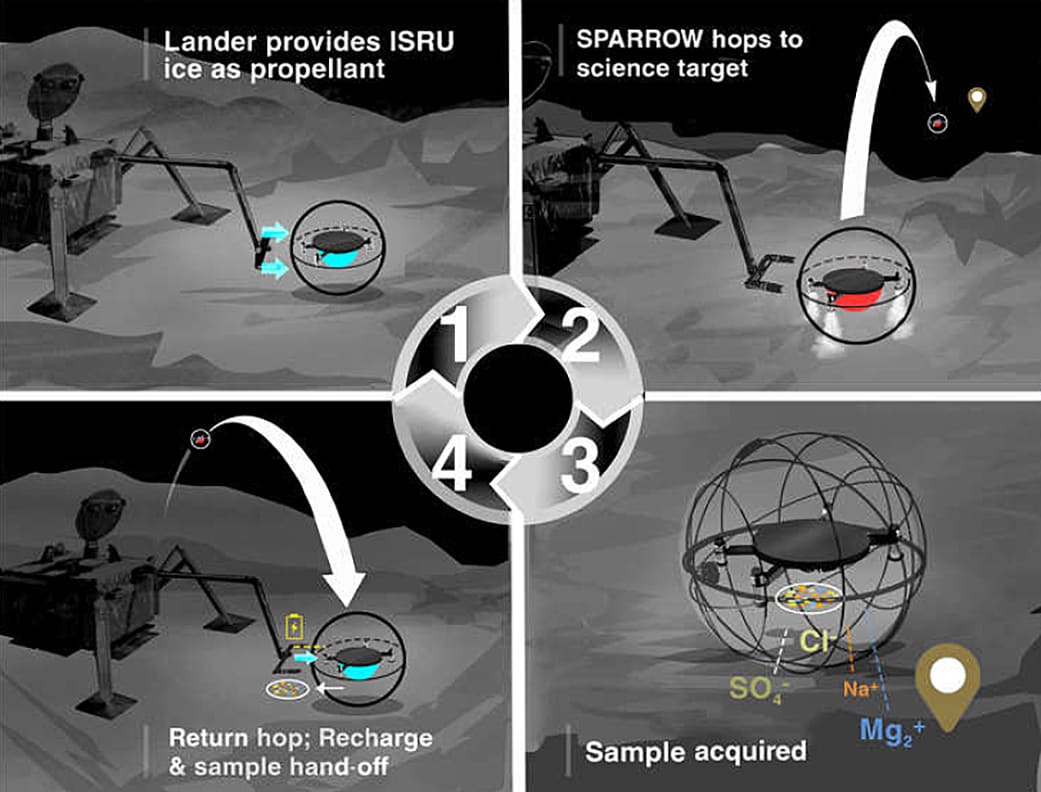Wayward space station finally set to re-enter atmosphere, with debris landing anywhere between New Zealand and midwest US
Agence France-Presse and Reuters
Sun 1 Apr 2018 02.48 EDT Last modified on Sun 1 Apr 2018 03.11 EDT.


A swarm of robotic bees, nimble enough to fly across the surface of Mars and explore the Red Planet’s nooks and crannies, is being funded by NASA.
The cyber-insects, dubbed Marsbees, are the size of bumblebees but have giant wings to generate sufficient lift to hover in the Martian atmosphere, which is around 100 times thinner than Earth’s.
Developed by US and Japanese scientists, the bees would be fitted with sensors and wireless communication devices so they could map terrain, take samples, or even look for signs of life, such as methane emissions.



CBS Local — Lockheed Martin has reportedly been working on a revolutionary new type of reactor that can power anything from cities to aircraft carriers.
The Maryland-based defense contractor recently received a patent for the compact fusion reactor (CFR) after filing plans for the device in 2014. According to reports, one generator would be as small as a shipping container but produce the energy to power 80,000 homes or one of the U.S. Navy’s Nimitz-class carriers.
Lockheed’s advanced projects division, Skunk Works, has reportedly been working on the futuristic power source since 2014 and claimed at the time that a CFR could be ready for production by 2019.
The tech-industry is led by sci-fi nerds who want to create the things they read about, or saw on screen.
We all stand to benefit, provided that is, they can avoid the ethical pitfalls depicted in science fiction.
Steven Spielberg’s new film “Ready Player One” imagines a future where people live much of their lives in virtual reality. Do science fiction’s predictions of the future ever come true? Yes. And it’s no surprise, given that the tech industry is led by sci-fi fans turning their visions into reality.
If you’re watching this on your phone it is partly thanks to Captain Kirk.
In Star Trek, first broadcast in 1966 he used a pocket-sized device to communicate with his crew.


This marks the seventh year that the particle accelerator has been in operation.
At 12:17 p.m. on Friday, March 30, the Large Hadron Collider at CERN was switched on once again, making 2018 the seventh year that the world’s largest particle accelerator has been in operation. It is also excitingly the fourth year running now that the LHC will have achieved 13 TeV collision energy.
Over the past four months, much maintenance has been conducted on the LHC, but with the work now completed the ATLAS experiment has begun a glorious new year as the Large Hadron Collider is now back in the business of circulating proton beams, as ATLAS report.

NASA’s latest Mars probe has a couple of very special hitchhikers.

O n the outskirts of Beijing, a policeman peers over his glasses at a driver stopped at a motorway checkpoint. As he looks at the man’s face, a tiny camera in one of the lenses of his glasses records his features and checks them with a national database.
The artificial intelligence-powered glasses are what Chinese citizens refer to as “black tech”, because they spot delinquents on the country’s “blacklist”. Other examples include robots for crowd control, drones that hover over the country’s borders, and intelligent systems to track behaviour online. Some reports claim the government has installed scanners that can forcibly read information from smartphones.
In the last two weeks, Facebook has been mired in a privacy storm in the UK and US over potential misuse of personal data. But such an event might baffle many in China, where the country’s surveillance culture eclipses anything Facebook has done.